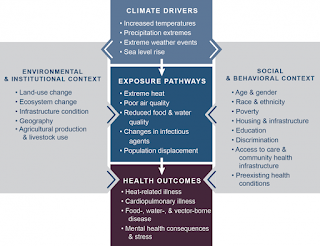Voting should be as fair and fraud-free as possible. But voter fraud is such a rare event and
seldom malicious even then, the efforts to combat it often throw the baby out with
the bath water. In just about every
case, since the Supreme Court gutted the Voting Rights Act, heroic efforts have
been made, mostly by states with a "history of discrimination", to
fight imaginary voter fraud by making it more difficult for people to
vote. I actually agree with the Shelby
County v Holder decision. The Voting
Rights Act itself was discriminatory, singling out certain states the lawmakers
in 1964 didn't like. The law should have
required ALL states to get preclearance for any changes to their voting
process. But it did sustain the
"solid south" voting block for the Democrats which lasted until 1980
(except for Nixon who capitalized on racism in 68 and his "secret
plan" to end the Vietnam War in 72).
My point is, in North Dakota (which actually wasn't on the
preclearance list in the VRA) and Georgia, the practices and policies
disproportionately affect minority voters.
White people don't have much of a problem providing a street address or
matching the spelling of their name to their driver's license. But even I myself had only an RFD box number when I lived in rural Iowa. And there are black people named Keisha,
DeShawn, or Tyrascius. Native Americans
have names like Jacy or Koko, and it’s not uncommon in Native American culture
for a person’s name to evolve over time.
Another example of this lop-sided practice cropped up in Dodge
City, KS where there is a single polling place for 27,000 residents. 60% of those residents are Hispanic (a
minority majority!) As a result of there
being just one place to vote, and the fact that many of the Hispanics have jobs that give
them no time off to vote, turnout among those Hispanics is historically around
17%. White voters show up at 61%. Now Dodge City has moved the single polling
place (due to road closures for construction) to a point outside the city
limits that is a mile from the nearest bus stop. Also of note, this 60% minority town of
13,000 eligible voters has one polling place. Statewide in Kansas there is a polling place
for every 1,200 voters on average. Statewide
the percentage of white people is 86.5%.
In Dodge City the percentage of white people is less than 40%. In Dodge City it is 10 times harder to vote
than in the rest of Kansas.
Republicans know they are in the minority nationwide. Only 27% of Americans identify as
Republican. 29% identify as
Democrat. When you look at
"leaning" as opposed to "identifying" the ratio is 42%
Republican and 47% Democratic. So if
everybody votes who can vote, Republicans lose.
But we white, middle- and upper class, employed (or retired) folks, get
out the vote, and it's usually easy for us to do so. And in that group, most vote Republican. It's the lower class, marginally employed, still
working past age 65, (maybe homeless without a residential street address!)
people of color for whom it has been made difficult to vote. Thus the Republican minority wins a lot more
than it should.
When I was working at the newspaper, I just left my office on Election Day, voted, and
came back. I was salaried so I didn't
even lose any pay. The guys who loaded
the paper in the presses didn't get any time off. And they mostly spoke Spanish.


.jpg)